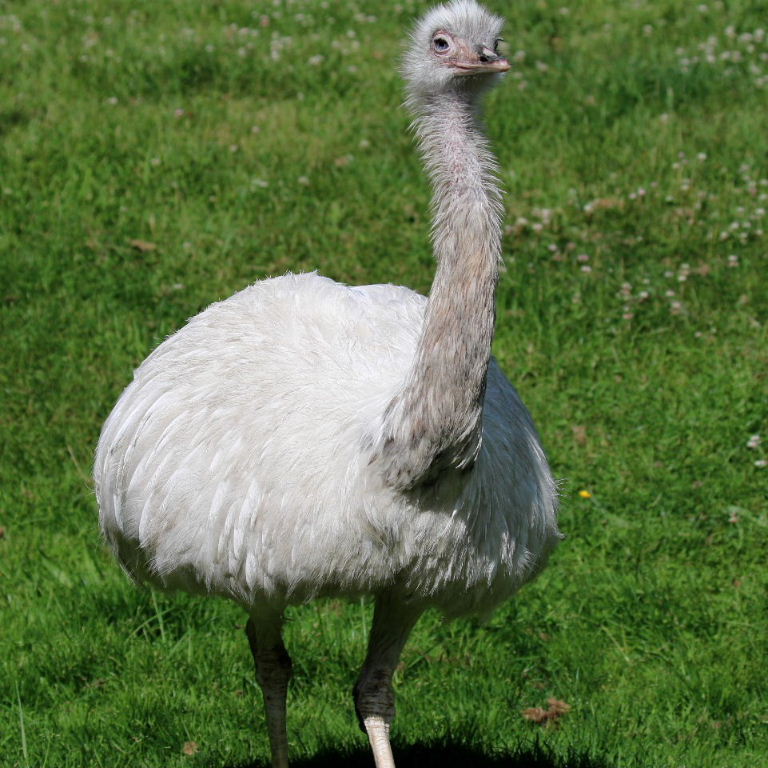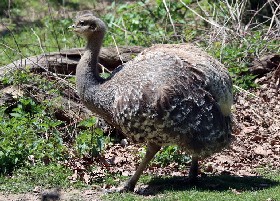(Greater/Grey/American) Rhea Rhea americana


The Greater Rhea, usually called just the Rhea but also known as the Grey, American and Common Rhea, is native to
northern Argentina, Brazil, Paraguay, Uruguay and Bolivia.



Like a small Ostrich but with feathered necks and thighs,
"if its a Rhea you can see the ear." The male has more black on his chest than the female and can stand over 5 feet tall.


Usually the head is grey and the eyes dark, but leucistic (white/pale) birds with light eyes are not uncommon.



Although flightless, there are small wings used for balance and change of direction in running.
There are 3 toes on each foot with claws used for scraping the nest and in defence of nests/chicks.


The male Rhea incubates the eggs and raises the chicks. He will build (scrape) the nest and mate with multiple females which will lay eggs in his nest.
The hens will then leave to mate elsewhere while he will sit on the nest (or have a subordinate male do so while he builds another nest)
and will look after the fledglings until they are juveniles.


A successful male may have a few dozen eggs/chicks. The chicks are brownish with a dark brown stripe along their spine bordered with white (and little ears on show).
 Adult
Adult


The juveniles tend to be browner, although plumage shade can vary between individual birds, adult or juvenile.



'ere's my profile.


